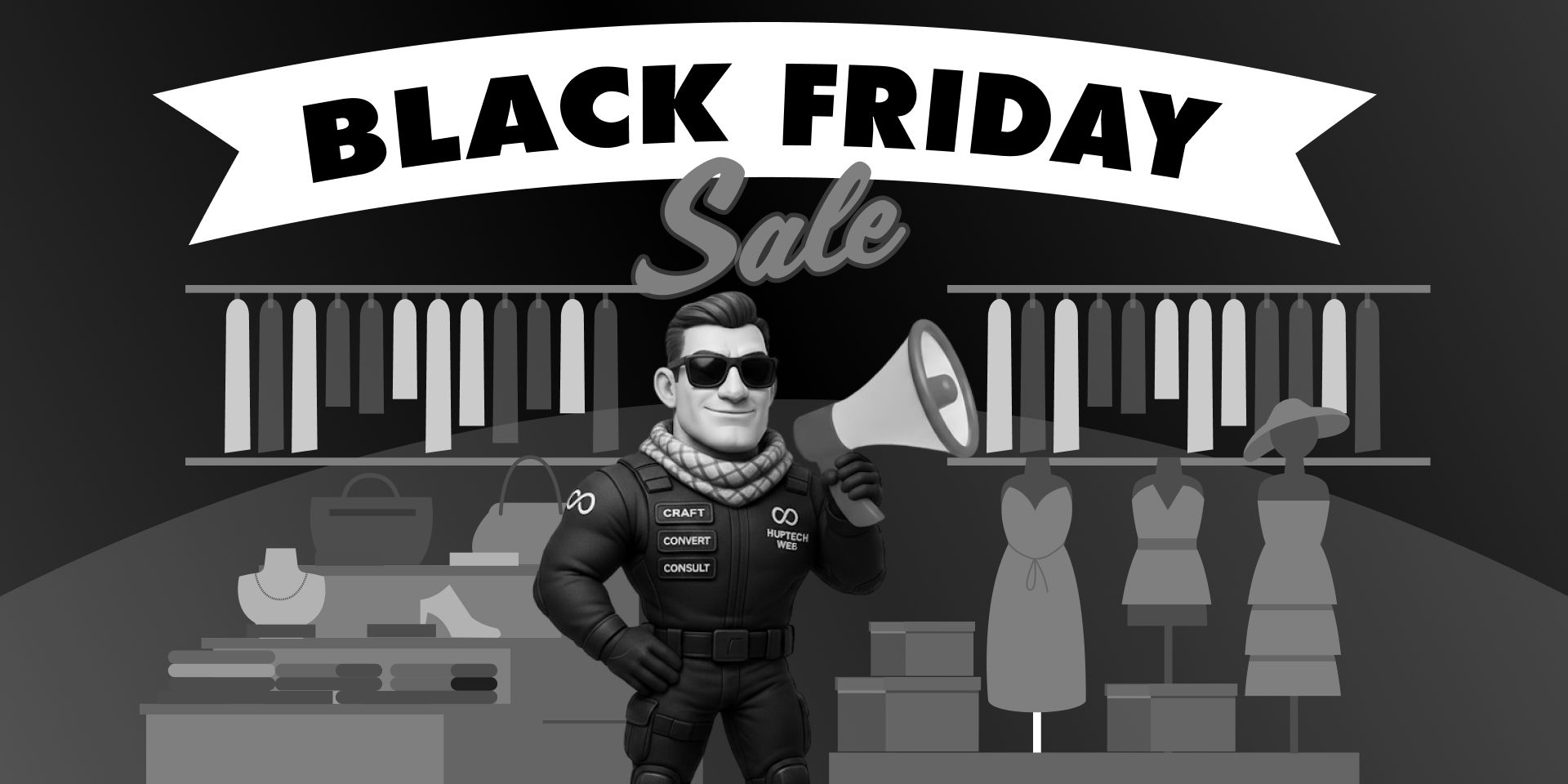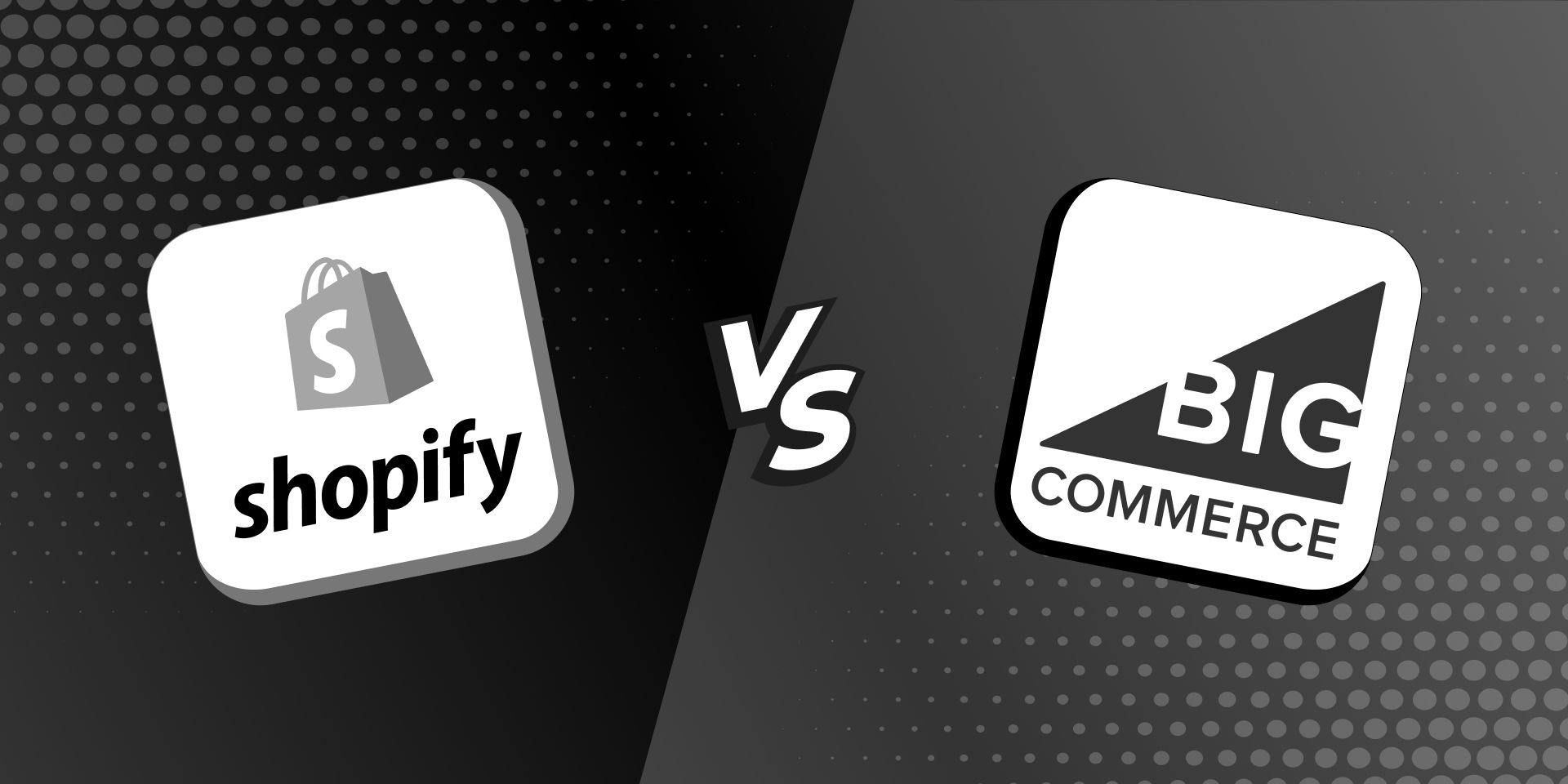
Top 8 Shopify Features for a Successful BFCM Sale!


Starting or running an online store can feel overwhelming, especially when there are so many platforms to choose from.
Shopify and BigCommerce are two of the biggest names in the e-commerce game, and for good reason. They both make it easier to sell online, but they’re not the same—and picking the right one for your business can make all the difference.
As we head into 2025, both platforms are already up with their A-game with new features, tools, and updates. However, what works for one business might not work for another.
Maybe you’re just starting and need something simple and affordable.
Or maybe you’re scaling up and need advanced features to handle more traffic and sales. Whatever your situation, understanding the differences between Shopify and BigCommerce is important. You might want to know about Shopify vs. Woocommerce vs. Bigcommerce, however this blog focuses mainly on Bigcommerce Vs. Shopify.
In this blog, we’ll break it all down simply—no tech jargon.
We’ll look at pricing, ease of use, design options, scalability, and more so you can determine which platform best fits your goals.
This comparison will help you make a confident decision.
Pricing — It’s a tie. However, Shopify has no sales limits but charges transaction fees, while BigCommerce has no transaction fees but enforces sales-based upgrades.
Ease of Use — Shopify's intuitive interface makes it a win for beginners, while BigCommerce packs more built-in features at the cost of a steeper learning curve.
Customization and Design — Shopify leads in design flexibility with 240 themes (13 free) and Liquid customization, while BigCommerce offers 273 themes (12 free) with developer-friendly HTML/CSS editing but less unique designs.
SEO and Marketing - Shopify excels in user-friendly SEO and built-in marketing, while BigCommerce offers stronger URL control but needs apps for advanced marketing.
Scalability & Performance — Shopify delivers seamless growth with no sales limits and faster speeds (1.3s), while BigCommerce enforces revenue-based upgrades and lags under heavy traffic (2.6s).
Payment Options — Shopify (100+ gateways, 2% third-party fees, boosts conversions) vs BigCommerce (65+ gateways, no extra fees). Pick Shopify for sales, BigCommerce for savings.
Apps & Integration — Shopify dominates with 12,000+ apps for endless customization (but costs add up). BigCommerce offers fewer apps (~1,200) but more built-in features to reduce dependencies.
Customer Support — Both platforms offer 24/7 live chat, phone, and email support with extensive help centers.
When it comes to choosing any e-commerce platform, pricing is often one of the most important factors. Both Shopify and BigCommerce have plans that suit different business needs. However, there are some minor differences in how they structure their fees.
Shopify offers four main plans (plus a Starter plan and an Enterprise plan). Here’s what you need to know:
Basic Shopify: $29/month
Shopify: $79/month
Advanced Shopify: $299/month
Shopify Plus: Starting at $2,300/month
Starter Plan: $5/month
Retail Plan: $89 /month
Additional Costs
Shopify offers a 3-day free trial and a $1 monthly deal for the first 3 months on its main plans. However, there are no long-term discounts unless you commit to annual billing (you save 25% on a plan you choose).
Sales Thresholds
Shopify doesn’t have any sales limits on its plans. You can sell as much as you want without being forced to upgrade. However, if your business grows significantly, you may need to upgrade to access more advanced features.
BigCommerce also provides four main plans but with a slightly different approach.
Standard ($29/month):
Plus ($79/month):
Pro ($299/month):
Enterprise (Custom pricing):
Additional Costs
BigCommerce offers a 15-day free trial for all plans, with no credit card required. It also provides a 25% discount if you pay annually.
BigCommerce charges no transaction fees on any plan, no matter which payment gateway you use. This can save you significant money if you’re processing a high volume of sales.
Both platforms are competitively priced, but the choice depends on your business size, sales volume, long-term goals and how much you’re willing to pay in extra fees.
When it comes to launching an online store, most people just want to sell products—not spend hours figuring out how to use a complicated platform. That's why ease of use is such a big deal. Shopify and BigCommerce are powerful e-commerce platforms, but they approach usability differently.
Shopify is widely regarded as one of the most user-friendly e-commerce platforms, and for good reason.
The platform guides you through an intuitive and straightforward step-by-step setup process from the moment you sign up. The dashboard is clean and well-organized, making it easy to find what you need, whether adding products, customizing your store, or checking sales analytics.
The management interface is simple to use to update descriptions, manage inventory, or organize your catalogue. Plus, Shopify offers excellent customer onboarding, with videos, checklists, and a comprehensive knowledge base to help you get started.
BigCommerce is a bit more feature-rich out of the box, which makes it feel more complex, especially for beginners.
While the platform's interface has significantly improved in recent years, it still has a steeper learning curve than Shopify.
BigCommerce shines in its built-in features.
The platform includes more advanced tools, which can reduce the need for third-party apps. However, this also means the interface can feel cluttered, and you might need some time to get used to where everything is.
The V3 control panel is a big improvement over previous versions, offering a cleaner and more organized dashboard. However, it's still not as intuitive as Shopify's.
It offers great flexibility when customizing and designing your online store. It gives you the tools needed to build unique storefronts just like you want.
Themes and Designs
Shopify currently offers 240 themes (13 are free, with 227 paid, ranging from $100 to $500 as of now). All these themes are responsive and well-designed, suitable for modern online stores.
Shopify themes include features like cart and checkout, built-in blogs, product filtering, mega menus, and enhanced search to improve navigation and product discovery.
Easy Customization with Liquid
Shopify uses a coding language called Liquid to design the look of your store. It lets you tweak templates, change layouts, and add custom features.
You can still make basic design changes using Shopify's built-in theme editor, even if you're not a coding expert.
Advanced Customization
If you want more control, Shopify offers Hydrogen and Oxygen, its headless commerce tools. These tools let developers build custom storefronts from scratch using React (a popular web development framework), giving them more freedom for creative and high-performance designs.
Custom Checkout and Backend Logic
Shopify's checkout is one of the best in the industry, and you can fully customize it. Shopify's checkout can flawlessly handle 40,000 checkouts/minute.
With Shopify Functions, you can add custom discount rules, shipping options, and payment methods without needing to code.
In fact, Shopify converts 12% more than BigCommerce!
BigCommerce currently provides 273 themes (12 are free, 261 paid, ranging from $99 to $400 as of now). Still, many are variations of the same design, reducing the uniqueness.
BigCommerce does have strong customization, but it's more developer-friendly.
Its drag-and-drop Page Builder allows you to modify the layout, move elements, and adjust design settings visually.
For advanced changes, developers can edit the HTML and CSS directly.
Developers can create bespoke widgets using BigCommerce's Widgets API, enabling the addition of unique content elements like text, images, videos, banners, carousels, and product lists to the storefront.
When it comes to this parameter, both Shopify and BigCommerce offer features that help you attract customers and grow your online store. However, they are unique in terms of built-in capabilities and ease of use.
Shopify has simple, beginner-friendly SEO tools that make optimizing product pages, meta tags, and URLs easy.
You can customize title tags, meta descriptions, and URLs. Still, Shopify automatically adds prefixes like /products/ or /collections/ to the URLs, which reduces flexibility for SEO-focused businesses.
It includes a built-in blogging platform, allowing you to create SEO-friendly content to drive traffic.
Shopify integrates with Yoast SEO (the popular WordPress plugin) and Semrush's Ecommerce Booster app, providing actionable recommendations to help you optimize your website for search engines.
For advanced SEO, Shopify supports Next.js, offering server-side rendering (SSR), which improves page load speed and boosts search rankings.
Shopify offers multi-channel selling, allowing you to connect your store with Instagram, TikTok, Amazon, Etsy, and other platforms through the Shopify Marketplace Connect app.
Shopify Audiences helps brands create highly targeted ad campaigns, boost return on ad spend, and cut acquisition costs by up to 50%.
Using Shopify Email, you can create and manage email marketing campaigns directly from the dashboard without the need for third-party apps.
Shopify also makes running Facebook and Google Ads easy with a streamlined setup.
The platform integrates with popular marketing apps like Klaviyo for email marketing and Facebook Ads Manager, allowing you to manage campaigns effortlessly in one place.
BigCommerce has advanced SEO capabilities, offering more flexibility than Shopify.
It provides complete control over URL structures, allowing you to create clean, customizable URLs without unnecessary prefixes. This is better for SEO.
BigCommerce also offers Open Graph data, which improves your store's visibility when shared on social media.
It includes SEO-friendly category pages and allows easy editing of title tags and meta descriptions.
For further optimization, you can use FavSEO and SEOKart apps, which have additional SEO customization features.
BigCommerce offers basic marketing tools, including the ability to create promotional banners and automated emails for abandoned carts or purchase confirmations directly from the dashboard.
However, for advanced marketing features like personalized email campaigns or social media ads, you need to download third-party apps, which adds complexity.
Setting up a Google Shopping campaign on BigCommerce requires more manual steps than Shopify, making the process slower.
You need a platform that can grow with your business and handle increased traffic, sales, and inventory without hiccups.
Shopify is designed to handle businesses of all sizes, from small startups to large enterprises.
There are no restrictions on how much you can sell, so you won't be forced to upgrade plans as your revenue grows.
For large enterprises, Shopify offers Shopify Plus, a high-tier plan starting at $2,300/month. It's built for massive scalability and features custom APIs, dedicated support, and advanced analytics.
Shopify holds a 73% global market share among the top 800 DTC brands!
Since Shopify takes care of server maintenance and infrastructure, you don't have to worry about scaling issues as your business grows.
Shopify's cloud-based infrastructure ensures fast page load times (average of 1.3 seconds) and reliable performance, even during traffic spikes. Shopify uses a global content delivery network (CDN) to ensure fast loading times for customers worldwide.
BigCommerce is a solid platform for small to medium-sized stores but faces scalability blockers for larger businesses.
If you hit specific sales thresholds, you must upgrade to a more expensive plan, even if you don't need the extra features.
As your store grows, you may require custom solutions or developer support to manage performance and stability.
BigCommerce's average page load time is 2.6 seconds, which is slower than Shopify's. While BigCommerce is reliable for small—to medium-sized stores, it may struggle with larger stores or high-traffic volumes.
BigCommerce may experience slowdowns under high traffic, requiring manual tweaks for better performance.
Both platforms offer various payment options, including gateways and digital wallets, but differ in transaction fees, and flexibility.
Shopify does have its payment solution, Shopify Payments, and support for popular third-party gateways like PayPal, Stripe, and Authorize.net.
You can choose from 100+ payment providers, making it easy to accept payments globally.
If you use Shopify Payments, you won’t pay any extra transaction fees (only standard credit card processing fees apply). However, third-party payment gateways have additional costs, which can be up to 2% per transaction, depending on your Shopify plan.
Shop Pay can boost conversion by up to 50% compared to guest checkout. 2 out of 3 buyers prefer Shop Pay at checkout. However, it’s not available on BigCommerce.
Shopify also integrates with digital wallets such as Apple Pay, Google Pay, and Shop Pay, improving the user experience and boosting conversion rates.
BigCommerce supports 65+ pre-integrated payment solutions in 230+ countries and 140+ currencies.
This range includes major providers like PayPal, Stripe, Adyen, and Square.
The good thing about BigCommerce is that it has no additional transaction fees policy, regardless of the payment gateway chosen. This approach allows merchants to select their preferred payment provider without incurring extra costs.
BigCommerce also supports digital wallets like Apple Pay, Amazon Pay, and PayPal One Touch. It offers accelerated checkout options like Stripe Link, Bolt, and Fastlane by PayPal, which make the checkout process quicker and more convenient.
Choosing the best platform often depends on how well each one integrates with the tools and services your business needs.
Shopify currently has over 12,000 third-party apps and integrations. This vast ecosystem covers everything from marketing and SEO to inventory management and customer support.
The sheer number of apps means you can find tools for almost any functionality you need, whether live chat, email marketing, or advanced analytics.
However, with so many categories and options, finding the right app for your needs can be challenging.
Many of Shopify’s apps are paid, and it’s nearly impossible to build a robust store without leveraging a few of them. For example, features like advanced SEO tools, email marketing, and abandoned cart recovery often require third-party apps, which can increase costs and complexity.
BigCommerce currently has around 1,200 apps across various categories, fewer than Shopify.
While the number of apps is smaller, BigCommerce includes more built-in features, reducing the need for third-party apps. For example, features like abandoned cart recovery and product filtering are available out of the box.
BigCommerce’s integrations are also easy to set up. Still, the smaller app marketplace means fewer options to choose from, making it more straightforward to find the tools you need.
Running an online store can be complicated, but reliable customer support can make all the difference, especially when you encounter technical issues or need help optimizing your store.
Shopify offers round-the-clock support via live chat, email, and phone.
It also has a vibrant community where merchants can ask questions, share insights, and learn from each other's experiences with detailed articles covering various topics, from setting up your store to advanced customization.
Shopify has a vast network of partners and experts to help with store setup, design, marketing, and more.
Not only Shopify but also BigCommerce provides continuous support via multiple channels like live chat, phone, and email, with dedicated numbers for different regions.
BigCommerce encourages users to engage with the community for shared knowledge and solutions and offers a comprehensive collection of articles and guides to assist users in managing their stores effectively.
It also collaborates with agencies and experts who offer specialized support services, including store customization and optimization.
Your choice between the two may depend on your preferred support channels and the specific needs of your business.
Millions of merchants in over 175 countries trust Shopify for success!
After carefully evaluating both platforms, Shopify is the better choice for most businesses—especially those prioritizing ease of use, scalability, and a seamless customer experience.
Its intuitive interface, vast app ecosystem, and reliable performance make it an ideal choice, particularly for entrepreneurs, growing brands, and anyone who values simplicity without sacrificing power.
Shopify has 100+ Shopify Plus Certified App Partners like Huptech Web specializing in Bigcommerce to Shopify migration, customization, performance optimization, and more.
That said, BigCommerce is a strong alternative if you have specific needs, such as advanced B2B functionality, built-in SEO tools, or developers who prefer standard web technologies. If your store requires deep customization without heavy reliance on third-party apps, BigCommerce may be the better fit.
Your decision should align with your business goals, technical expertise, and growth plans.
If you’re still unsure where to start, we suggest taking advantage of free trials for both platforms—Shopify’s 3-day trial (then $1/month for 3 months) and a free consultation with our team to see how we can optimize your existing setup, especially if you want to migrate your store on bigcommerce to shopify
You can also try BigCommerce’s 15-day trial—to test which suits your workflow best.
As certified Shopify experts, we provide end-to-end Shopify services, including store setup, custom design, app integration, and performance optimization. Let us handle the technical heavy lifting while you focus on growing your business.
Whichever you choose, both platforms provide the tools to build a successful online store! With the right platform and the right partner, your e-commerce success is indefinite.
